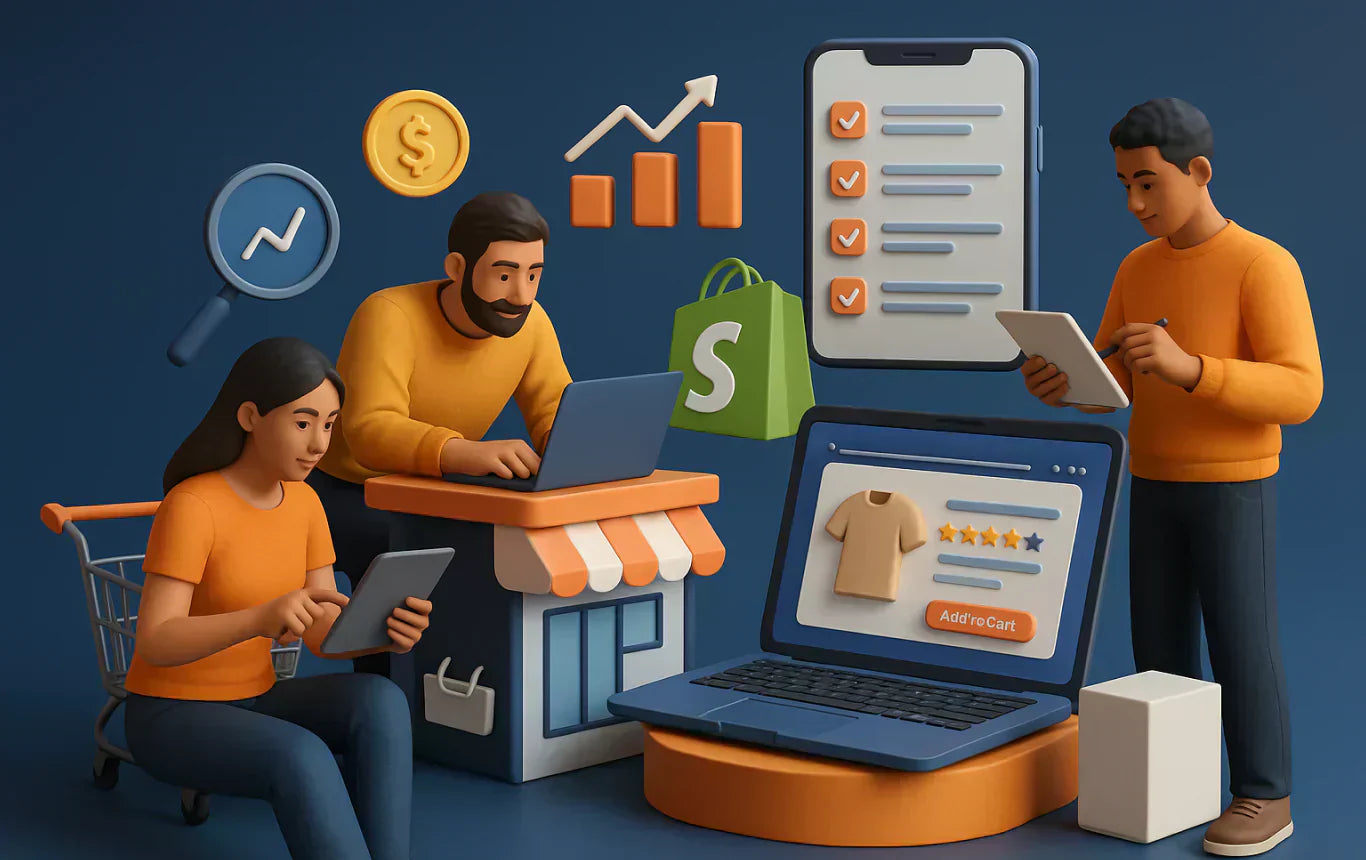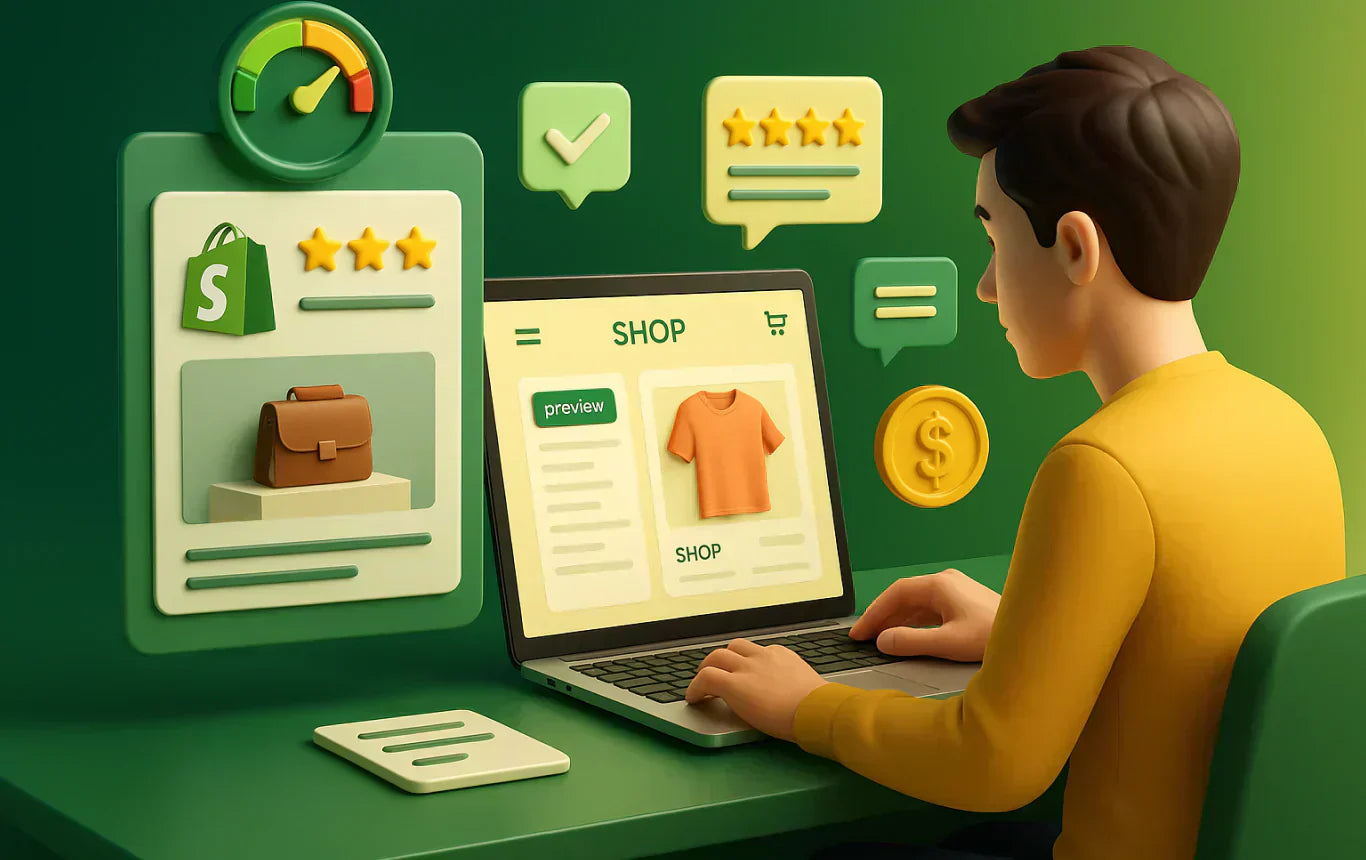Table of Content
Rising prices for goods, raw materials, and shipping could pressure stores to raise their product pricing, lowering customer spending. As inflation reduces buying power, consumers may prioritize basic purchases over luxury goods, affecting sales of non-essentials. Shopify stores must modify their plans to stay competitive and profitable under financial constraints. In this blog we will explore how inflation affects e-commerce and offers doable advice to help control these issues and increase profitability.
What Is Inflation and Why Does It Occur?
Inflation is the rise in products and service prices over time that lowers buying power. It results from various elements, including supply chain interruptions, rising manufacturing prices, and greater demand for restricted items. For Shopify retailers, profit margins, customer behavior, and product prices depend greatly on inflation. An effective battle against inflation depends on a knowledge of its underlying causes.
The Impact of Inflation on Retail: Key Challenges to Watch

Below are some factors that cause inflation and their impacts on retail:
1. Rise in Product Prices
Directly affecting product prices, inflation drives higher raw materials, manufacturing, and shipping expenses. For Shopify stores, this implies:
- More expensive products can turn off consumers on a budget.
- Lower profit margins should help retailers endure higher expenses to stay competitive.
- There is more pressure to explain increasing rates while keeping client loyalty.
2. Decreased Customer Purchasing Power
Consumers become more careful with their spending as inflation lowers the value of money, reducing their purchasing power. For Shopify stores, this means changing customer priorities, whereby basics take the front stage over luxuries.
- Reduced sales volumes, especially for luxury or non-essential products.
- More rivalry is needed to draw customers into a tighter market.
3. Increased Labor Costs
Rising wages and inflation-driven labor demands impact retailers' operating costs. This could result for Shopify retailers in:
- More running expenses could sour profit margins.
- Problems attracting and keeping talent, which raises turnover.
- There is more pressure to maximize personnel and cut dependency on hand labor.
4. Volatile Global Markets
Global supply chains can be upset, and inventory management can be affected by economic uncertainty, changes in the value of money, and geopolitical concerns. For Shopify stores, the consequences consist of the following:
- Higher import items' costs are brought on by changing currency rates.
- Supply chain interruptions cause delays and stock shortages.
- It is more challenging to predict supply needs.
5. Revenue Drop Due to Discounts
Many stores give discounts to counteract the impact of inflation on demand, although this might lower income. This results for Shopify stores into:
- Reduced profit margins when discounts cut down the bottom line.
- Dependent more on discounts to be competitive, so income is further lost.
- Having trouble keeping profitability and customer retention.
6. Wages and Staff Retention
The effect of inflation on wages forces stores to provide competitive pay to keep employees, raising running costs. This entails for Shopify retailers:
- Greater pay for staff members to cover growing living expenses.
- Greater difficulty keeping qualified employees results in more turnover.
- Further expenses for training and hiring.
7. Increased Costs for Marketing and Advertising
Getting new customers gets more costly as inflation drives up the cost of digital advertising. This results for Shopify retailers:
- Increased customer acquisition expenses via digital ad campaigns.
- More people vying for ad space is driving up rates across different platforms.
- A load on marketing funds influences campaign efficacy.
5 Tips to Combat Inflation in USA for Shopify Merchants

Here are effective solutions to challenges occur due to inflation in USA:
1. Optimize Product Pricing Without Losing Customers
During inflation, careful balancing of profitability with competitive pricing is essential.
How to Implement:
- Review pricing policies to match expenses driven by inflation without startling customers. Slow increases work better than abrupt changes.
- Showcase your products' quality, dependability, or special qualities to highlight value-based selling.
- Use Shopify tools to adjust prices based on demand and competitor trends.
Pro Tip: To keep customers’ trust, be honest about price adjustments, stress quality, and service enhancements.
2. Focus on Operational Cost Reduction
Reducing unnecessary expenses can help absorb inflation-driven cost increases.
How to Implement:
- Audit activities to find cost-cutting potential, including renegotiating supplier agreements or choosing local vendors to reduce transportation costs.
- Shopify apps such as “Katana Inventory Management” let you automate chores such as marketing, order processing, and inventory control to cut labor expenses.
- Track Shopify's built-in statistics to find underperforming items and modify inventory buying in response.
Pro Tip: Use Shopify's free tools and resources to minimize depending on outside paid software wherever you can.
3. Enhance Customer Retention with Loyalty Programs
Especially in inflation, keeping current customers is more financially sensible than attracting new ones.
How to Implement:
- To honor frequent purchases, start a loyalty program offering discounts, special items, or points redeemable for future orders.
- Using Shopify's customer segmentation features, personalized offers help to make customers feel valuable.
- Share early-bird offers or member-only benefits to devoted consumers via email marketing.
Pro Tip: Emphasise in your marketing loyalty rewards to inspire more involvement and larger purchases.
4. Adopt Cost-Effective Marketing Strategies
High ad expenses during inflation could compromise your bottom line. Change your emphasis to attempts at organic marketing.
How to Implement:
- Target keywords like "cost-saving strategies for Shopify" or "inflation-resistant business strategies," then optimize your Shopify store for SEO.
- Share user-generated content, behind-the-scenes stories, and promotions on social media sites.
- Create useful material, such as blogs or tutorials, that address consumer pain areas, such as controlling growing expenses or locating reasonably priced products.
Pro Tip: To maximize reach without increasing costs, repurpose already existing material into several formats, such as turning blogs into Instagram posts.
5. Increase Average Order Value (AOV)
Encouragement of customers to spend more at each transaction helps to counterbalance inflationary forces.
How to Implement:
- Combine products to provide value offers and boost general sales.
- Set free shipping levels somewhat over your AOV right now.
- Using Shopify's built-in tools or apps such as DCC, upsell and cross-sell products during checkout.
Pro Tip: To inspire customers, clearly explain the advantages of increased spending, such as shipping savings or access to limited-time specials.
Conclusion
For Shopify stores, inflation in the USA poses serious difficulties, influencing operating expenses, client expenditures, and pricing. Smart pricing policies, operational optimization, and improved customer retention help stores be profitable under these difficult circumstances.
Look at working with a Shopify agency like SANOMADS to negotiate these obstacles and maximize your Shopify store. Their expertise can enable you to increase profits, lower expenses, and enhance customer experience.









